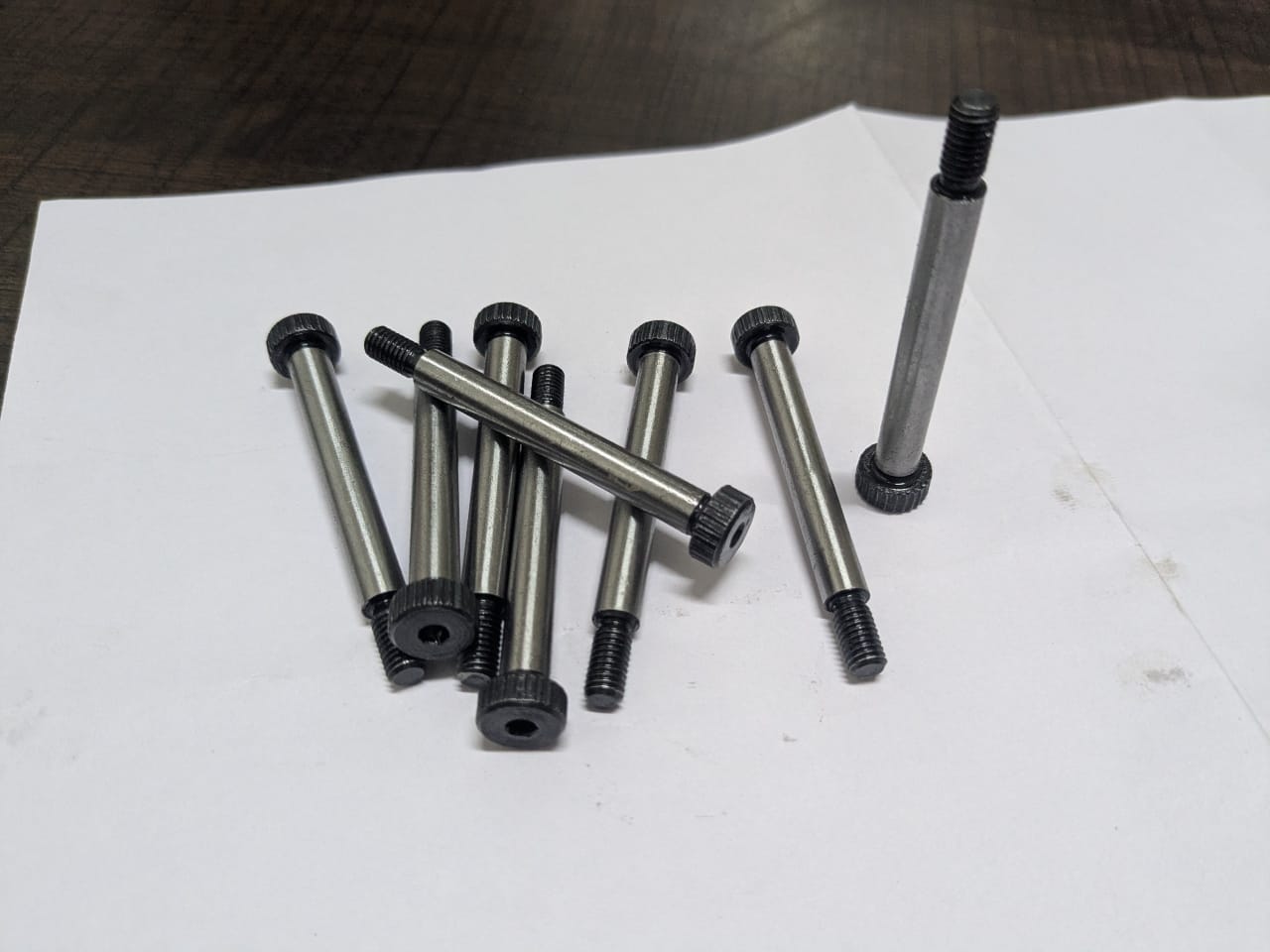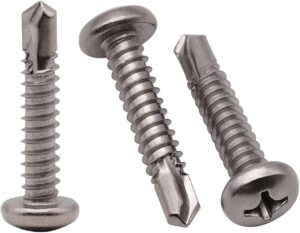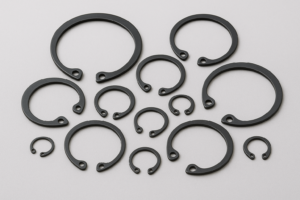Description
A shoulder bolt, also known as a shoulder screw or stripper bolt, is a specialized type of fastener with a unique design that differentiates it from standard screws and bolts. These bolts feature a cylindrical unthreaded “shoulder” between the head and the threaded portion, which allows them to function as pivot points, axles, or mounting pins in various mechanical and structural applications.
Shoulder bolts are widely used in industries such as automotive, aerospace, manufacturing, robotics, and electronics due to their precision, strength, and versatility. This article explores the construction, types, working mechanism, advantages, applications, and selection criteria for shoulder bolts.
What is a Shoulder Bolt?
A shoulder bolt is a type of fastener that consists of three main sections:
- Head: Typically a hex or socket head that allows for torque application during installation.
- Shoulder: A smooth, cylindrical section with a precise diameter that provides a bearing surface for moving parts.
- Threaded Portion: A standard threaded section that engages with a nut or tapped hole to secure the bolt in place.
Unlike conventional bolts, the unthreaded shoulder section is the primary functional element, providing a smooth surface for rotating or sliding components.
Construction and Materials
Shoulder bolts are manufactured from various materials based on their intended application:
Common Materials
- Stainless Steel: Offers excellent corrosion resistance and is ideal for marine, medical, and food-grade applications.
- Alloy Steel: Known for its high strength and wear resistance, commonly used in industrial and automotive applications.
- Brass: Provides good electrical conductivity and corrosion resistance, often used in electronics.
- Titanium: Lightweight and highly durable, used in aerospace and medical applications.
Coatings and Finishes
To enhance performance, shoulder bolts are available with various coatings:
- Zinc Plating: Provides basic corrosion protection.
- Black Oxide: Improves wear resistance and reduces friction.
- Nickel Plating: Enhances corrosion resistance and aesthetic appeal.
Types of Shoulder Bolts
Shoulder bolts are classified based on their design and intended function:
1. Standard Shoulder Bolts
These are general-purpose bolts used in machinery, furniture, and mechanical systems where a smooth pivoting surface is required.
2. Precision Shoulder Bolts
Manufactured to tighter tolerances, these bolts are used in applications requiring high accuracy, such as robotics and automation.
3. Stripper Bolts
Commonly used in die-making and stamping processes, these bolts are designed to guide stripper plates and allow precise motion.
4. Hex-Head Shoulder Bolts
Feature a hexagonal head instead of a socket head, providing a larger bearing surface and easier installation using wrenches.
5. Shoulder Bolts with Lubrication Grooves
These bolts include small grooves along the shoulder to retain lubrication, reducing wear and extending service life in high-friction applications.
How Shoulder Bolts Work
Shoulder bolts function by providing a stable, smooth bearing surface while allowing for rotation or sliding movement of attached components. The threaded section secures the bolt to a surface, while the shoulder section supports loads and guides motion.
Installation Process
- Drill a Hole: The hole diameter should match the shoulder diameter for a precise fit.
- Insert the Bolt: Place the shoulder bolt through the hole, ensuring that the shoulder section aligns with the moving parts.
- Tighten the Bolt: Use a hex key or wrench to secure the threaded section into a tapped hole or with a nut.
- Check for Movement: Ensure that the attached components can rotate or slide smoothly on the shoulder.
Advantages of Shoulder Bolts
- High Precision: Provides accurate alignment for mechanical components.
- Smooth Motion: The unthreaded shoulder allows for controlled movement in rotating or sliding applications.
- Reduced Wear: Shoulder bolts reduce friction between moving parts, extending the life of mechanical systems.
- Versatility: Can be used in a wide range of industries, from robotics to automotive engineering.
- Easy Installation: Requires minimal tools for secure and reliable fastening.
- Corrosion Resistance: Available in materials and coatings that protect against environmental degradation.
- Load Distribution: The shoulder provides a broad surface area, distributing loads more evenly than standard bolts.
Applications of Shoulder Bolts
Due to their unique design, shoulder bolts are found in numerous applications across different industries:
1. Automotive Industry
- Used in suspension systems, engine components, and linkages.
- Provides pivot points for moving parts such as control arms and brake calipers.
2. Aerospace and Aviation
- Used in aircraft assemblies, landing gear mechanisms, and flight control systems.
- Provides lightweight and high-strength fastening for critical applications.
3. Robotics and Automation
- Serves as axles, guide pins, and pivot points in robotic arms and conveyor systems.
- Ensures precise movement and durability in automated machinery.
4. Electronics and Consumer Goods
- Used in cameras, printers, and mechanical keyboards.
- Provides smooth operation in small moving parts.
5. Industrial Machinery
- Found in die-stamping equipment, presses, and injection molding machines.
- Ensures precision alignment and smooth motion in manufacturing processes.
6. Furniture and Hardware
- Used in drawer slides, hinges, and adjustable mechanisms.
- Provides smooth movement in furniture components.
Selection Criteria for Shoulder Bolts
When choosing a shoulder bolt, consider the following factors:
- Shoulder Diameter: Ensure that the shoulder fits precisely within the intended hole or bearing surface.
- Shoulder Length: Select a length that matches the required range of motion for moving parts.
- Thread Size and Length: The threaded portion should be compatible with the tapped hole or nut.
- Material and Coating: Choose materials based on environmental conditions and load requirements.
- Load Capacity: Consider the expected loads and stresses the bolt will endure in operation.
- Tolerance and Precision: For high-accuracy applications, opt for precision shoulder bolts with tight dimensional tolerances.
For More Products Click Here






Reviews
There are no reviews yet.